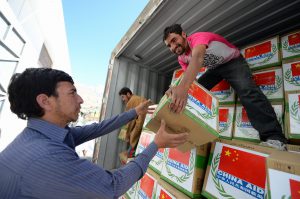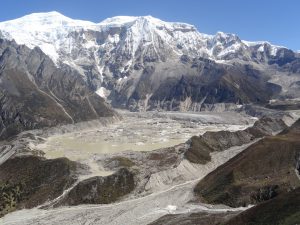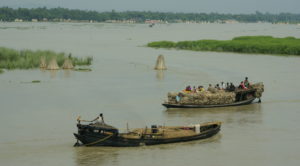Representatives from more than 190 countries met in Buenos Aires for the UN’s Conference on South-South Cooperation last week with the specific aim of advancing the Sustainable Development Goals and 2030 agenda. It is only the second conference of its kind. The first took place in the Argentine capital in 1978.
The meeting stressed the urgent need to act to advance sustainable development and pledged to improve technical capabilities among southern states to resolve their domestic challenges. Countries also agreed to formalise cooperation on topics such as climate change, the environment, food security, human rights and agriculture through bilateral and multilateral agreements.
“We have to take it to the next level,” said Achim Steiner, director of the UN Development Program, adding; “We will not be able to achieve all the SDGs if we do not move forward in South-South cooperation.”
The Sustainable Development Goals (SDGs) were established by the UN in 2015 and served as the focal point of the three-day meeting.
Limited progress
Worldwide, progress in meeting the SDGs has been limited, according to the UN’s latest report. Three out of ten people lack access to safe water, millions die every year from air pollution and climate action is not ambitious enough, it said.
“If we fail to take action, we will be stuck in a future of more emissions,” said Antonio Guterres, secretary general of the UN. “South-South cooperation can contribute to the transformation of economies dependent on fossil fuels, using strategies to strengthen sustainable development and environmental protection.”
The conference resulted in a closing document that calls for developed and developing countries to “step up their efforts” in implementing the SDGs.
“Scarcity of resources continues to hamper the expansion of South-South cooperation and triangular cooperation. Therefore, we underscore the need for more resources to be mobilised and for participation to be obtained, especially from the private sector.”
Time for change
The presidents of Uruguay, Paraguay and Chile and numerous foreign ministers from developing countries attended the meeting, alongside representatives from developed ones, who were invited to demonstrate how the North and the South can better collaborate.
“The summit does not replace the North-South work, but complements it and enriches it,” said María Fernanda Espinosa, president of the UN General Assembly and a former Ecuadorean foreign minister.
40
the number of years since the last UN-organised South-South Summit
The summit reflected on the Buenos Aires Action Plan (BAPA), guidelines for South-South cooperation at the inaugural South-South summit 40 years ago. This time around, delegates outlined future cooperation in a work plan to 2030, which incorporated the targets and principles of the Paris Agreement on climate change.
The emphasis on technical assistance between countries demonstrates a commitment that goes beyond rhetorical expressions of solidarity.
South-South cooperation is the backbone of regional integration; it brings people closer together and facilitates political consensus processes
In 1990, the Global South – broadly defined as a grouping of low-income or politically and socially marginalised countries outside Europe and North America – represented only a third of world production. Today it makes up about half.
Trade between countries of the South has tripled in the same timeframe and the proportion of South-South investment has grown from 20% to 50%.
According to the UN’s trade and investment arm (UNCTAD), China is the major force behind this boom in economic activity. In a 2018 report it said there had been a “China-led explosion of intensified cooperation within and across the global South”.
China’s presence in the global South has grown through forging closer bilateral ties and also through mulitlateral fora such as BRICS, the grouping of Brazil, Russia, India, China and South Africa. Engagement known as “triangular” cooperation – multilateral platforms and development finance mechanisms that do not rely solely on the support of one global superpower – has also grown.
There is, however, relatively less North to South aid.
At the opening of the event, Argentine President Mauricio Macri said: “Cooperation is a great tool to promote the link between countries with different levels of development, as was made clear last December, when we communicated the role of cooperation with the G20,”
Over the years, South-South cooperation made significant progress. For example, with Argentina’s help Bolivia has managed to fight a plague of locusts that threatened to destroy thousands of square-kilometres of crop plantations. Argentina leads agricultural cooperation of this kind, with more than 180 projects in 40 countries.
“South-South cooperation is the backbone of regional integration; it brings people closer together and facilitates political consensus processes,” Espinosa said.
Time is running out and we have to set projects in stone as soon as possible
Teresa Rivero, Portugal’s foreign minister said: “We have to support each other and collaborate, we need more multilateralism. It is the only way to have peace and implement the 2030 agenda,” adding; “sharing resources, experiences and information is key.”
Marc-André Blanchard, Canada’s representative to the UN and moderator of the plenary session, said: “Everyone can benefit from sustainable development. It is not a government agenda, it is for all citizens. Time is running out and we have to set projects in stone as soon as possible.”
The environment trap
During the summit, the Organization for Economic Co-operation and Development (OECD) presented its 2019 Latin America Economic Outlook report in which it highlighted environmental threats in the region as one of four “development traps.”
The trap is linked to the productive structure of most LAC economies, which is biased towards raw material and natural resource-intensive activities, the report said. It warned that this may lead these countries towards an environmentally and economically unsustainable future.
Did you know?
Latin America contains 40% of the world's biodiversity
Latin America holds 40% of the planet’s biodiversity and has one of the lowest ecological footprints in the world, the OECD report said. However, the region suffers much of the consequences of collective inaction on climate on a global scale.
The report highlighted the physical and economic impacts of climate change in LAC, including the effects of temperature and rainfall changes on agricultural yields.
The region has an “unsustainable” economic model since it relies on depleting its natural resources. Overcoming this will require “bold policy reforms” to move to a low-carbon economy and foster economic growth, the report concluded.
“Existing policy frameworks and economic interests continue to be geared towards fossil fuels and carbon-intensive activities. To reverse this, an unprecedented infrastructure and technological transformation is needed.”







